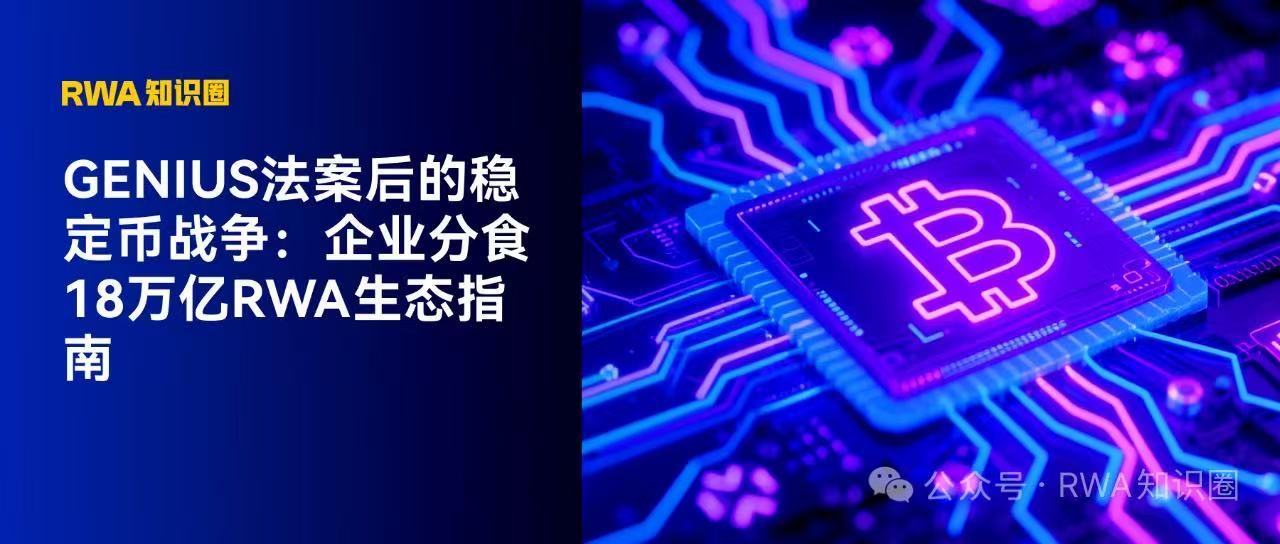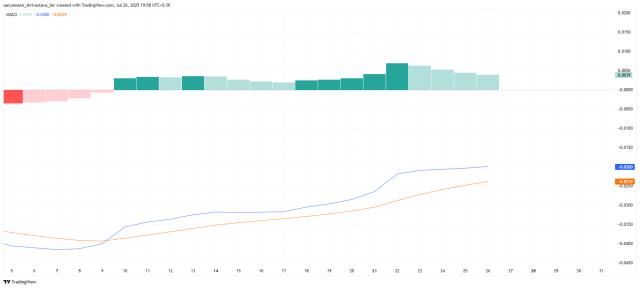
Text | RWA Knowledge Circle
Edited | RWA Knowledge Circle
I. Regulatory Breakthrough: Compliance Entry Ticket for Trillion-Dollar Stablecoin Market
In July 2025, the U.S. Senate officially passed the GENIUS Act, marking a breakthrough in the global stablecoin regulatory framework. This legislative process is milestone-worthy, as stablecoins are evolving into the strategic infrastructure of the 21st-century financial system. It's worth noting that stablecoins have transcended mere payment tools, gradually becoming an aggregation platform integrating traditional payment networks like SWIFT, ACH, and PIX, improving cross-border settlement efficiency hundredfold and compressing costs to below 10% of traditional systems - a transformation comparable to the internet's disruptive effect on telecommunications. It's important to note that regulatory clarity will accelerate industry reshuffling, with an estimated 80% of enterprises expected to be eliminated in the compliance competition within the next three years.
II. Tether's Monopoly Revelation: Unreplicable Success Code for Small and Medium Enterprises
Tether (USDT), currently occupying 62% of the global stablecoin market, has a success path with distinct historical specificity. Tracing the industry's development, around 2015, the cryptocurrency innovation center was concentrated in the Greater China region, with traditional financial institutions generally terminating banking services for crypto exchanges. In this context, the Tether team collaborated with Bitfinex exchange to develop the first USD-pegged stablecoin USDT, innovatively using the Omni protocol as a Bitcoin blockchain extension layer. This technical architecture essentially built an early smart contract system on the Bitcoin network, making USDT the only viable channel for East Asian users to trade USD assets at the time. Subsequently, Tether continued to expand into regions with weak financial infrastructure, providing an important channel for emerging market users to access USD liquidity. This success model, combining technological first-mover advantage, regional market gaps, and regulatory arbitrage windows, is now difficult for other enterprises to replicate in the highly regulated market environment.
III. Tripartite Division: Breakers, Gold Diggers, and Observers in the Stablecoin Battlefield
As Tether's first-mover advantage becomes difficult to replicate, a new competitive landscape is accelerating under the regulatory framework. The current stablecoin market competition presents three typical participants: offensive players represented by Binance Pay, opportunistic players represented by Worldpay and BlackRock, and strategic observers represented by JPMorgan Chase. This layered structure reflects differentiated strategic paths:
- Offensive players leverage existing user scale and channel advantages to seize market share, with Binance Pay, covering 200 countries' long-tail markets, being a typical case;
- Opportunistic players focus on value mining in细分领域, including payment service providers deeply cultivating G20 countries' fiat-stablecoin settlement channels, asset management institutions promoting money market fund tokenization (like BlackRock's BUIDL), and fintech companies expanding emerging market product penetration;
- Strategic observers reflect the cautious attitude of traditional financial institutions, with JPMorgan Chase typically planning to fully enter the market after 2026 regulatory details are clarified.
The core contradiction is that amid intensifying competition among giants, small and medium enterprises urgently need RWA accelerators to break through the dual barriers of compliance architecture and on-chain technology.
IV. Ant Mode: How Non-Banking Institutions Open a Second Battlefield for Stablecoins
Although small and medium enterprises struggle to establish themselves in the stablecoin competition dominated by financial institutions, non-banking institutions have opened up a new track through scenario advantages, with Ant International's practice providing a reference. From its business layout, there is a deep intrinsic connection between payment ecosystems and stablecoins, specifically manifested in:
Business Synergy Matrix:
- Alipay+ covers 800 million users' cross-border payment network
- Wan Li Hui builds trillion-level SME fund channels
- Antong integrates 500,000 merchants for real-time on-chain settlement
Infrastructure Construction
- Proprietary chain Jovay achieves 100,000 TPS/100ms response (1000x Ethereum speed)
- DTVM virtual machine compatible with Ethereum development ecosystem
- SmartCogent framework reduces development barriers by 80%
This full-stack capability based on payment scenarios builds high entry barriers: According to reports, the initial investment for enterprises to build their own compliant stablecoin system exceeds $5 million, and must pass stress tests for daily transactions in the tens of millions. In this context, RWA accelerators break through via step-by-step empowerment - first opening SEC/SFC dual-certified settlement channels to lower infrastructure barriers, then deploying modular AML/KYC solutions to build compliance moats, and finally establishing ecosystem interfaces with the Jovay chain for technical adaptation. This three-in-one resource integration not only deconstructs technical monopoly but also opens broader RWA market channels for small and medium enterprises.
V. Winner's Strategy: Survival Rules in the Era of Layered Competition
Stablecoins are merely the entry-level application of Real World Asset (RWA) tokenization. According to IBC predictions, the market size will reach $18.9 trillion by 2033 (exceeding global gold market value), developing according to the three-win mechanism proposed by U.S. Treasury Secretary Bessent: private sector reducing circulation costs, social systems optimizing resource allocation, and consumers gaining inclusive financial services. For small and medium enterprises, they can achieve real estate/carbon credit asset tokenization through RWA accelerators and access high-performance chain ecosystems via modular compliance solutions.
The GENIUS Act spawns financial infrastructure generational replacement, forming three competitive dimensions: head institutions competing for issuance dominance, tech companies building ecosystem barriers, and traditional finance gradually penetrating. RWA accelerators become the key pivot balancing the market, providing compliance frameworks, cross-chain technology, and liquidity networks, enabling small and medium enterprises to establish differentiated advantages in the trillion-dollar market. As real asset tokenization deepens, the RWA track will reconstruct the global asset flow paradigm.







